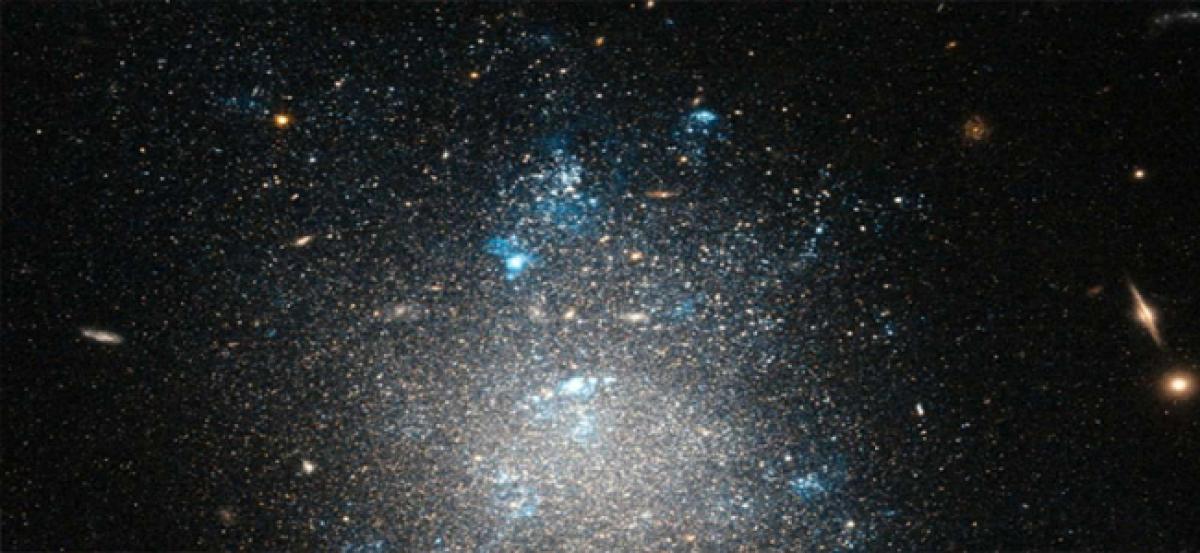Live
- Style Banarasi with these 5 modern twist this wedding season
- Akansha flaunts seductive look
- Ajith requests fans to drop ‘Kadavuley’ tag, prefers simplicity
- ‘Pushpa 2’ BTS: Rashmika’s transformation as Srivalli
- Sreeleela inaugurates South India Shopping Mall at Ongole
- Nuveksha steals the spotlight
- Rana’s wife Miheeka take social media by storm
- Inter-state burglar arrested
- Traffic diversions for ‘Vision’ meet
- YSRCP stir for MSP today
Just In

The last reservoir of ordinary matter that had so far evaded detection has been located in the space between galaxies - existing as extremely hot filaments of oxygen gas, scientists say.
The last reservoir of ordinary matter that had so far evaded detection has been located in the space between galaxies - existing as extremely hot filaments of oxygen gas, scientists say.
Ordinary matter, or "baryons," make up all physical objects in existence, from stars to the cores of black holes.
However, until now, astrophysicists had only been able to locate about two-thirds of the matter that theorists predict was created by the Big Bang.
Researchers from the University of Colorado Boulder in the US pinned down the missing third, finding it in the space between galaxies.
That lost matter exists as filaments of oxygen gas at temperatures of around 1 million degrees Celsius, according to the study published in the journal Nature.
"This is one of the key pillars of testing the Big Bang theory: figuring out the baryon census of hydrogen and helium and everything else in the periodic table," said Shull.
Researchers have a good idea of where to find most of the ordinary matter in the universe - not to be confused with dark matter, which scientists have yet to locate: About 10 per cent sits in galaxies, and close to 60 per cent is in the diffuse clouds of gas that lie between galaxies.
In 2012, researchers predicted that the missing 30 per cent of baryons were likely in a web-like pattern in space called the warm-hot intergalactic medium (WHIM).
To search for missing atoms in that region between galaxies, the team pointed a series of satellites at a quasar called 1ES 1553 - a black hole at the center of a galaxy that is consuming and spitting out huge quantities of gas.
"It's basically a really bright lighthouse out in space," Shull said.
Scientists can glean a lot of information by recording how the radiation from a quasar passes through space, a bit like a sailor seeing a lighthouse through fog.
First, the researchers used the Cosmic Origins Spectrograph on the Hubble Space Telescope to get an idea of where they might find the missing baryons. Next, they homed in on those baryons using the European Space Agency's X-ray Multi-Mirror Mission (XMM-Newton) satellite.
The team found the signatures of a type of highly-ionised oxygen gas lying between the quasar and our solar system - and at a high enough density to, when extrapolated to the entire universe, account for the last 30 percent of ordinary matter.
"We found the missing baryons," Shull said.
Galaxies and quasars blew that gas out into deep space over billions of years. Shull added that the researchers will need to confirm their findings by pointing satellites at more bright quasars.

© 2024 Hyderabad Media House Limited/The Hans India. All rights reserved. Powered by hocalwire.com







